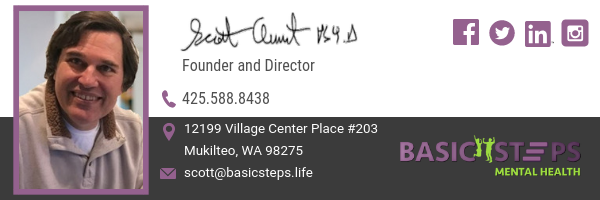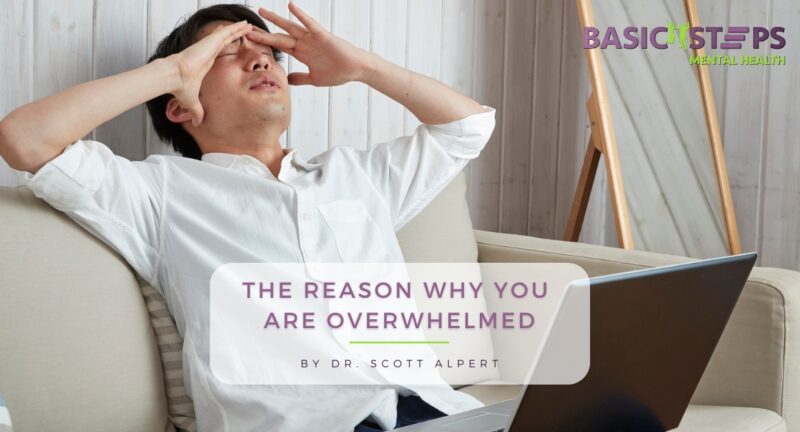
Family Sculpting
I’ve learned a few rather obscure tools in the 29 years I have been practicing psychotherapy. I guess the most obscure tool is from Family Systems Therapy designed by Virgina Satir. There are more common approaches that lean on the obscure side and my favorite would be from Neurolinguistic Programming (NLP). NLP addresses our inner aspects or sub-personalities. I’m sure you are aware of that critical voice that screams at you from time to time. “The Critic” for example is one of the main subpersonalities. Learning how to shift it from negative to a helper can be achieved by following their progression.
NLP also helps therapists work at discovering whether a client is Auditory, focusing on words; Visual, focusing on what they see; Kinesthetic, focusing on the physical body; or Emotional, focusing on feelings. The example they gave was with a car salesman approaching a potential buyer.
When a person meets another person, they lead with subtle messages.
“Good afternoon,” the salesman may say. “What kind of vehicle are you trying to find?”
“I am looking for a car that looks stylish, is good on gas mileage, and is dependable. Plus, the price has to be reasonable.”
The salesperson would realize the buzzword – “looking.” Right away they know they are dealing with a visual person and would tailor their response to what is seen.
“Fantastic,” the salesperson smiles. “Can you see yourself behind the wheel of this baby? Look at all the features that you can play with. We have hundreds of colors to choose from. Which one suits you?”
Or, if a person is auditory, the salesperson may focus on the sound system, the quiet drive, or (as for me in my youth) the monster headers that could be added to give it that extra roar!
As for therapists, we need to match interventions with how a person operates. If they are mental, you need to use mental-level tools. If emotional, the emotional tools will work best. It is important to know that people cannot think themselves out of an emotional wound, they have to feel their way out of it.
Family sculpting, by Virginia Satir, is strictly emotional. Virginia was a giant in family therapy and has long passed. In Family Sculpting she helped a client mold their family (in a family session), or members of the therapy group (in group therapy) into poses that depict the family dynamic. For example, if the father was like a King, he would be positioned standing tall and flexing his muscles. If a mother was subservient, she would be placed next to him on her knees and bowing. One child might have their arms crossed with their back turned away from mom and dad. Another might be looking at the T.V. Next, each family member is given a statement to repeat, demonstrating their role. For example, the father would say, “I am great! I am the king of the family!” The mother may say, “You are my hero.” (Just typing this out makes me want to vomit). The child might say, “What the hell am I doing in this family?” Another child might say something like, “I love the Seahawks.”
A traumatic scene from earlier in life can also be depicted in this approach. This is where you have a person recreate a difficult situation and have either the family (if they are present) or individuals from a group repeat what the individual heard at that time.
Note:
This type of treatment is very impactful and is usually performed after deep work has been going on for a while. I prefer people being in therapy for a year before we address a core issue in this manner.
Many ask me why we have to do this type of work. My response is that we don’t have to do this type of therapy at all. Applying love to the part of you that is hurt is all that is needed and that is generally our focus. Family Sculpting is just another option, for those that keep reliving the same memory over and over again, as people often do who suffer from PTSD. I don’t recommend this type of work for that type of person, only inner child work, or work that addresses the age stage they were originally traumatized. I only proceed when a foundation has been built and move in a slow and deliberate way that honors each person taking part in the exercise.
Many believe that if we don’t look at a difficult situation it will go away. Unfortunately, once you live through something it sticks, and holding it down takes tremendous psychic energy leading to depression. Yes, instead of running from an issue, we go into it, then realize that it is not as bad as we remembered. Still, it isn’t anything to make fun of.
After a typical family sculpting exercise, it is important to do a debriefing. This is where everybody who took part in the exercise is given an opportunity to speak about it and talk about what came up for them. In one particular exercise, the sculpting part took maybe 20 minutes and for over an hour we all processed the impact it had on us.
There are reasons why people get stuck when it comes to the traumas they had experienced. Our mind wants to deny what happened and hide it away. On the psychological level, our subconsciousness is just a holding tank that wants to purge everything out. In us not releasing it, it is natural to have flashbacks of abuse, and nightmares about it, because the mind wants it out and done with. So, when therapists engage in these types of processes, no longer hidden, it could be disturbing. With Spiritual Psychology, the important factor is applying love to the younger part inside of you that went through that experience. Talk to that younger part. Do fun games or play with that younger part. Go on an adventure with that part of you that suffered, because when love is applied to our hurt, we heal. This is a less traumatic approach than the sculpting exercise, but Virginia Satir’s personality was one that was in your face, and wanted to engage the family’s defenses so she could work with them. Mine is much more low-key.
I hope this was helpful to you.
Compassionate Care is Always Available
There are many more tools and strategies you can use in your pursuit of happiness. Here is where we come in. Contact us at Basic Steps Mental Health and let us support and educate you on this journey back to your loving heart center. Imagine living a heart-centered life, regardless of what is happening externally. We’d love to be of help.
For 25 years, Dr. Scott Alpert, the clinical director of Basic Steps Mental Health, has treated over 7,000 people with mental health and addiction problems, using a Psychological approach that mixes and matches ten of the top approaches used in the industry. We are here virtually and in-person to help you get through this COVID-19 pandemic and many other difficulties you may be experiencing.
May you have good mental health.
Related Posts
The Reason Why You Are Overwhelmed
Working at the Mental Health Urgent Care Center for 11 years helped me...
Tis’ the Season for Depression
Welcome to the holiday season. If you’ve had issues in the past, they tend to...




